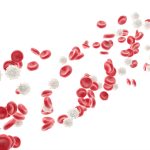I det næste stykke tid kan du møde nogle af de mange ph.d.er, der er involveret i GCHSP’s CAGs.
I dag kan du møde ph.d.-studerende Magnús Pétur Bjarnason Obinah fra CAG in Cancer immunotherapy – CAGci
CAG in Cancer immunotherapy (CAGci)
Ph.d.-studerende: Magnús Pétur Bjarnason Obinah, MD, PhD Student
Department of Plastic Surgery, Herlev and Gentofte Hospital, Copenhagen University

Hvad går dit ph.d.-projekt ud på?
(engelsk)
Circulating tumor DNA for early detection of recurrence and risk-stratification in melanoma
Impact/relevance
This project addresses the need for better identification of patients with high risk of recurrence after treatment for primary melanoma and the need for more accurate detection of recurrence in high risk patients without the use of ionizing radiation. The method we propose includes isolation of circulating tumor DNA (ctDNA) from a standard blood sample, which is minimally invasive and may be repeated with minimal risk.
Background
With rising numbers and increased survival of metastatic melanoma, prediction of risk and early detection of recurrence have become increasingly important. The best current screening tool (18F-FDG PET-CT scan) only detects metastases above a certain diameter (4-6mm), is costly and exposes patients to high doses of radiation. The only biomarkers currently accepted as prognostic factors of melanoma specific survival (LDH and S100B) are non-specific and may be elevated by a variety of conditions unrelated to melanoma progression. We propose using digital droplet polymerase chain reaction (ddPCR) based detection of ctDNA, a fraction of normal cell-free DNA (cfDNA), for early detection of recurrence and risk-stratification in melanoma, based on high-frequency mutations. Minimally invasive, repeatable and affordable, ctDNA has the potential to improve recurrence risk stratification and provide early detection of recurrence in patients with higher stages of melanoma. Because of its advantages, it might also be employed for patients with lower stages of melanoma, who are not offered recurrence surveillance today; but this remains to be investigated.
Aim
The purpose of this national project is to assess the use of circulating tumor DNA (ctDNA) for stratification of risk of recurrence and for early detection of recurrence in Danish patients treated for melanoma. We will do this by comparing state-of-the art ddPCR based ctDNA detection of melanoma specific mutations in plasma with current gold standard methods for staging and surveillance, including tumor histopathology, sentinel node biopsy and whole-body 18F-FDG PET-CT. This is the first Danish study examining the role of ctDNA in melanoma.
Methods
Study 1: Examines melanoma patients from three hospitals in Denmark, who have a high risk of recurrence and who undergo regular clinical examination and PET-CT scans. Blood sampled at every clinical visit will be examined for ctDNA using ddPCR. Correlation with recurrence or metastasis, detected clinically or with PET-CT will be analyzed.
Study 2: Examines patients from three hospitals in Denmark, newly diagnosed with melanoma in all clinical stages. ctDNA will be measured pre-operatively and 30 days post-operatively. Results will be analyzed for correlation between measurable ctDNA and tumor characteristics, sentinel node status and other prognostic markers (sex, age a.o.). An economic evaluation will be conducted in order to establish the cost-effectiveness of ctDNA compared to current practice in both studies, should it be shown capable of replacing one or more current methods.
Expected outcome
Study 1: Will test the hypothesis that ctDNA monitoring of high-risk patients results in earlier detection of recurrence at reduced costs compared to the current methodology using PET-CT scans, which entails the use of intravenous contrast agents and ionizing radiation.
Study 2: Will explore the feasibility of a ctDNA based risk evaluation prior to surgery, potentially removing the need for sentinel node biopsy, and that of ctDNA based detection of minimal residual disease (MRD) following surgery, improving recurrence risk stratification and identifying patients that might further benefit from adjuvant therapy. Economic evaluation will inform whether the use of ctDNA could be cost-effective on a national level. Prospective national studies will be planned based on our results, evaluating the QALY based effect of offering intensified surveillance programs and/or adjuvant therapy to patients with detectable ctDNA.
Hvad betyder det at være en del af en CAG?
“Mulighed for tværfaglig sparring og feedback fra klinikere, forskere og eksterne partnere samt struktureret feedback fra patienter som vejledere.
Denne anskuelse af vores forskningsprojekt i et større perspektiv, er utrolig værdifuldt i forhold til vores kommunikation og styring af projektet”.
Magnús Pétur Bjarnason Obinah
10.03.2022








